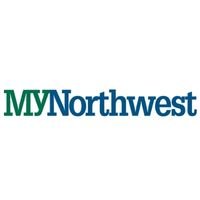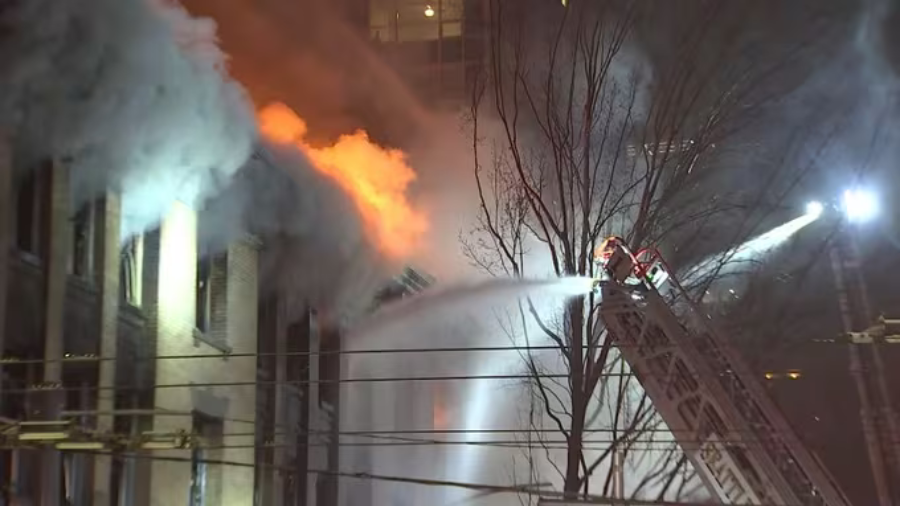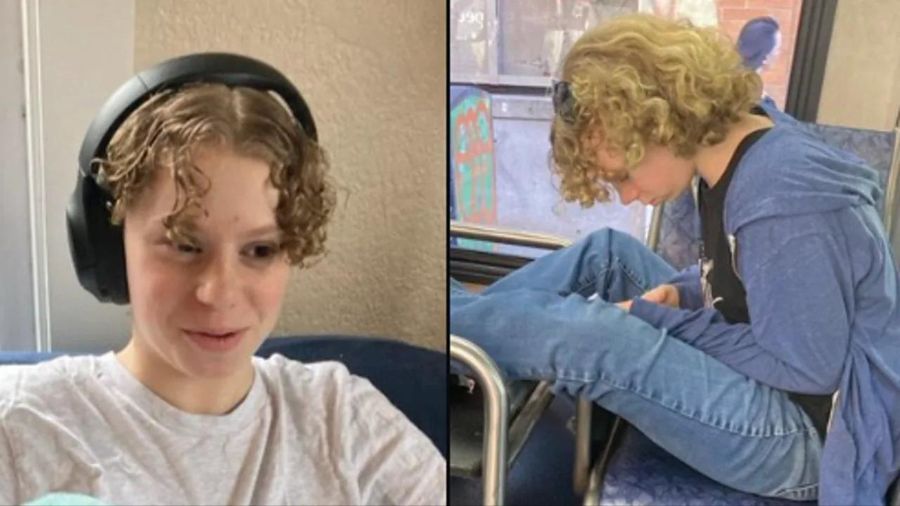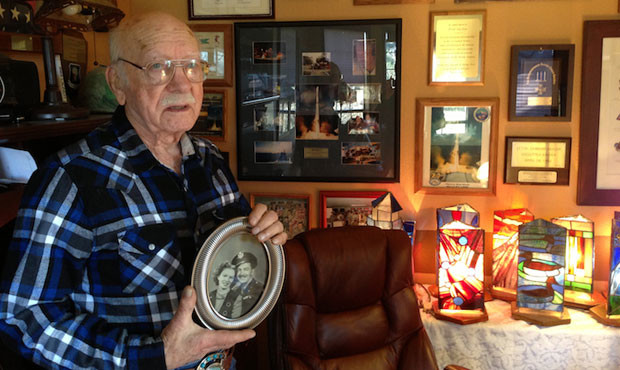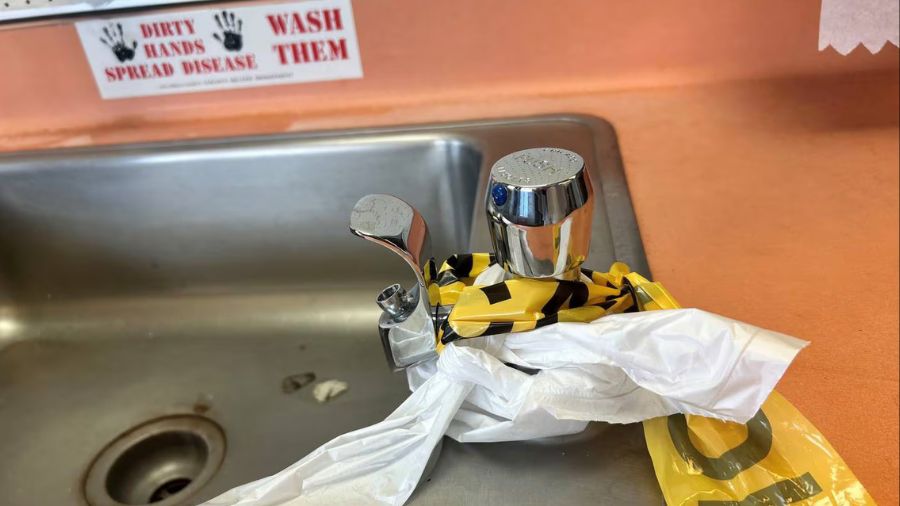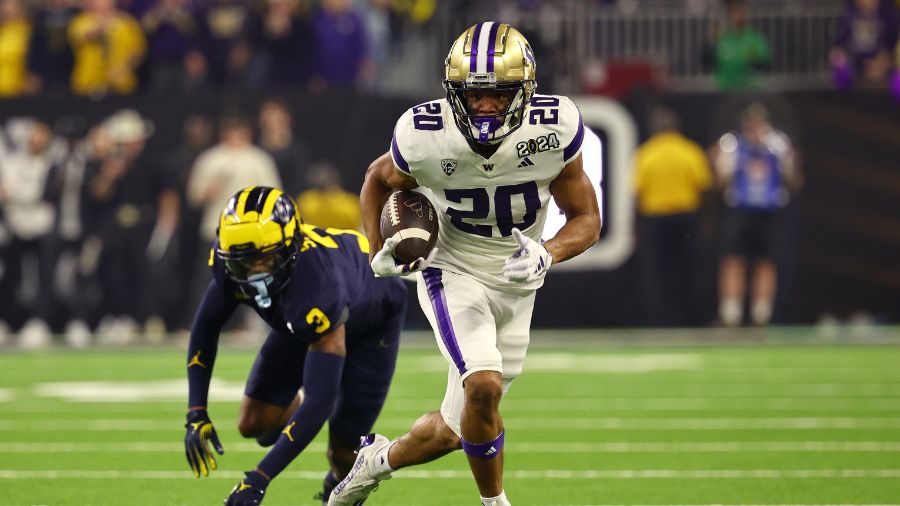What’s allowed under Gov. Inslee’s Healthy Washington reopening plan
May 15, 2020, 3:10 PM | Updated: Jan 31, 2021, 7:55 am

Curbside priority pick-up zones are outside retail businesses in Seattle. (Photo courtesy of SDOT blog)
(Photo courtesy of SDOT blog)
Gov. Inslee has unveiled several iterations of reopening plans for Washington state, as it continues to manage the effects from the ongoing coronavirus pandemic.
On Jan. 4, 2021, Inslee announced a reopening plan that is regional (vs by county) that took effect Jan. 11.
In contrast to the previous Safe Start program, this plan only has two phases to start. More phases will be added when COVID activity is knocked down, Inslee clarified.
Counties are grouped into eight regions based on health system resources over a geographic area, the governor explained. All regions start in Phase 1. There is no application for moving to Phase 2, but rather will be decided based on information regularly collected by the Washington State Department of Health.
To advance, regions have to show a 10% decreasing trend in case rates; a 10% decrease in COVID hospital admission rates; an ICU occupancy rate that’s less than 90%; and a test positivity rate of less than 10%.
To remain in Phase 2, the region must maintain three of four metrics, a criteria that changed a couple weeks after the original regional plans. If any region fails to meet any two metrics, they will regress to Phase 1. The Washington State Department of Health will evaluate each region’s metrics every two weeks instead of every week.
In Phase 2, restaurants can open indoor dining at 25% capacity, same for fitness centers indoors. Sports competitions may also resume in Phase 2 with limited spectators. Wedding and funeral ceremonies will be able to increase their capacities from current limits as well.
It’s possible that regions will move backward from Phase 2 to Phase 1.

Below is an account of previous processes to reopen Washington state:
Gov. Inslee on May 29, announced the stay-at-home order would expire on May 31, but his Safe Start plan would begin on its heels. The plan allowed for a county-by-county approach to reopening. However, the rules have changed since then.
Inslee announced a new proclamation on Nov. 15 and extended it to Jan. 4 in a news conference on Dec. 8 when it was set to expire on Dec. 14. He extended it a second time on Dec. 30 to expire on Jan. 11.
The latest rules on indoor gatherings, enacted on Nov. 15, are as follows:
- Indoor social gatherings with people from outside your household are prohibited.
- Outdoor social gatherings should be limited to 5 people from outside your household.
- Restaurants and bars are closed for indoor service. Outdoor dining and to-go service is permitted. Outdoor dining must follow the outdoor dining restriction. Table size limited to 5 for outdoor dining. These restaurant restrictions go into effect at 12:01 a.m. Wednesday, November 18.
- Fitness facilities and gyms are closed for indoor operations. Outdoor fitness classes may still occur but they are limited by the outdoor gathering restriction listed above. Drop off childcare closed.
- Bowling Centers are closed for indoor service.
- Miscellaneous Venues: All retail activities and business meetings are prohibited. Only professional training and testing that cannot be performed remotely is allowed. Occupancy in each meeting room is limited to 25% or 100 people, whichever is fewer.
- Movie Theaters are closed for indoor service. Drive-in movie theaters are still permitted and must follow the current drive-in movie theater guidance.
- Museums/Zoos/Aquariums are closed for indoor service.
- Real Estate open houses are prohibited.
- Wedding and Funerals receptions are prohibited. Ceremonies are limited to no more than 30 people.
- In-store retail limited to 25% indoor occupancy and must close any common/congregate non-food related seating areas. Food court indoor seating is closed.
- Religious services limited to 25% indoor occupancy no more than 200 people, whichever is fewer. No choir, band, or ensemble shall perform during the service. Soloists are permitted to perform. Facial coverings must be worn at all times by congregation members and no congregational singing.
- Professional Services are required to mandate that employees work from home when possible, and to close offices to the public. If they remain open, occupancy is restricted to 25%.
- Personal services are limited to 25% of maximum occupancy.
- Long-term Care Facilities outdoor visits only. Exceptions can be made for essential support person and end-of-life care.
- Youth (school and non-school) and adult sporting activities limited to outdoor only for intrateam practices, masks required for athletes.
Previously, Washington state was operating under different phases of reopening by county. Each phase included restrictions based on a set of criteria that relies on public health data. Movement between phases was put on pause on July 14.
There were five counties in a modified version of Phase 1, 17 in Phase 2, and 17 in Phase 3, according to the state. The state Department of Health said each phase would last a minimum of 3 weeks. However, on July 14, Gov. Inslee announced a statewide pause on movement to any phase. It applied to all counties in all phases and lasted through at least July 28. However, he then again extended the pause indefinitely.
Phase 1 modified:
Benton (Details)
Chelan (Details)
Douglas (Details)
Franklin (Details)
Yakima (Details)
Phase 2:
Adams (Approved on May 22)
Clallam (Approved on May 28)
Clark (pending Phase 3 application – on pause)
Cowlitz (pending Phase 3 application – on pause)
Grant (Approved on May 23)
Jefferson (pending Phase 3 application – on pause)
King (Approved on June 19)
Kitsap (pending Phase 3 application – on pause)
Klickitat (pending Phase 3 application – on pause)
Okanogan (Approved on June 5)
Pierce (Approved on June 5)
San Juan (Pending Phase 3 application – on pause)
Skagit (Approved on June 5)
Snohomish (Approved on June 5)
Spokane (Approved on May 22)
Walla Walla (pending modified Phase 3 application – on pause)
Whatcom (Approved on June 5)
Phase 3:
Asotin (Approved on June 5)
Columbia (Approved on June 5)
Ferry (Approved on June 5)
Garfield (Approved on June 5)
Grays Harbor (Approved on June 19)
Island (Approved on June 19)
Kittitas (Approved on June 23)
Lewis (Approved on June 19)
Lincoln (Approved on June 5)
Mason (Approved on June 19)
Pacific (Approved on June 16)
Pend Oreille (Approved on June 5)
Skamania (Approved on June 11)
Stevens (Approved on June 5)
Thurston (Approved on June 24)
Wahkiakum (Approved on June 5)
Whitman (Approved on June 5)
Confirmed coronavirus cases across Washington state
On May 29, Inslee also announced new criteria that counties must meet to move from phase to phase. Incidence of new cases reported during prior two weeks have to be fewer than 25 cases per 100,000 people. The average number of tests performed per day during the past week (or average % tests positive for COVID-19 during the past week) needs to be 50 times the number of cases (or 2%). Read more about the criteria here.
The criteria has morphed at least twice. On Tuesday, May 19, Gov. Inslee announced the criteria that counties can use to apply for variance changed. Counties could apply for a variance if they had fewer than 10 new COVID-19 cases per 100,000 residents over a two-week span. Those standards were consistent with the CDC’s own guidelines. Originally, the guidelines were that counties must have had a population of less than 75,000 and no new cases of the coronavirus in the last three weeks.
A county must also show it has adequate local hospital capacity and enough PPE to outfit health care workers. Read more from the DOH.
The application must include plans for:
- Making testing available and accessible to everyone in the county with symptoms
- Staffing case investigations and contact tracing
- Housing people in isolation or quarantine who can’t or don’t want to do so at home
- Providing case management services to those in isolation and quarantine
- Responding rapidly to outbreaks in congregate settings.
The state Secretary of Health will review applications and determine whether a county meets the requirements move on to the next phase, potentially with modifications. Variances can be revoked if circumstances change in a county.
On July 23, Gov. Inslee tightened restrictions on weddings, funerals, gyms, and restaurants. Read more.
Weddings and funerals (both secular and religious services):
• Ceremonies are permitted, receptions are prohibited. They must continue to adhere to all other parts of the current guidance.
• For all phases, the maximum indoor occupancy for these events is 20%, or up to 30 people, whichever is less, as long as there can be six feet of distance between households.
• There will be a grace period under these changes for weddings and funerals scheduled to take place in the next two weeks may take place under previous guidance.
For restaurants and bars in all phases (in effect Jul 30):
• Indoor dining is limited to members of the same household. Put simply: If you’re looking for a seat with people you don’t share a home with, sit outside. If you’re there with people who are in your household, you’ll be allowed to sit indoors. We are taking this step because we believe it reduces the potential for exposure and transmission in dine-in settings.
• Restaurants must also close down vending game areas – like pool tables, darts, video games – until Phase 4.
• Alcohol service at restaurants must end at 10 p.m.
• Bars will be closed for indoor service. Bars are defined as… taverns, breweries, wineries, and distilleries – regardless of their ability to provide food service.
Phase 1:
There are four phases to Inslee’s Safe Start process. May 5 marked the start of Phase 1, permitting the following industries to begin reopening: construction activity, outdoor activities, park access, drive-in spiritual service, landscaping, car washes, vehicle sales, pet walking, and retail sales with curbside pickup. Outdoor activities include: golf and day use at state parks and public lands for fishing, hunting and other recreational purposes.
On May 14, the governor reopened: outdoor, staffed tennis; guided tours and instruction for ATV, paddle sports, fishing and horseback; go-cart tracks, ORV/motocross and participant-only motorsports; and other substantially similar outdoor activities.
On Aug. 20, Inslee released updated guidelines to non-spectator motorsports in Phase 1 and Phase 2.
Phase 2:
Permitted in Phase 2: outdoor recreation, manufacturing, construction, domestic services, retail, real estate, professional services, nail salons, barbers, pet grooming, and restaurants (all with strict safety measures).
Inslee announced a proclamation on May 18 to reopen medical and dental offices.
Each industry that opens has a state-issued set of safety guidelines that must be followed. The state has worked with industry leaders to develop the guidelines. Get the DOH’s guideline’s here.
Only 5 individuals – not including staff – are allowed for indoor fitness services at a time. This includes gyms, fitness studios, and indoor pools, ice rinks, volleyball courts, and tennis facilities. These are limited to small group instruction or private training, not to exceed five participants.
On Aug. 20, Inslee released updated guidelines to non-spectator motorsports in Phase 1 and Phase 2. Also updated was agritourism, such as tree lots and U-pick fields, which is allowed to operate under Phase 2 under new guidelines.
Museums are allowed to reopen in Phase 2 as long as they meet requirements, and can reopen in Phase 3 with lower occupancy.
The new guidelines would also allow bowling league play in Phase 2 and Phase 3.
The state has listed what is prohibited here.
Phase 3
Phase 2 allows gatherings of 10 or fewer people. Inslee announced on July 16 a change to the rules. Originally, Phase 3 allowed gatherings of 50 or fewer people, including sports (without audience participation). Restaurants table size will be reduced to 5 and occupancy to 50% indoors. Bar areas in restaurants at <25%.
Fitness center occupancy will be reduced to 25%. All group fitness classes are limited to no more than 10, not including the instructor.
Indoor movie theater occupancy will be limited to 25%.
Retail, libraries, museums, and government buildings could open. Pools and recreation centers could open at 50% capacity.
On Aug. 20, Gov. Inslee changed the restrictions on bowling. The new guidelines would allow bowling league play in Phase 2 and Phase 3. Museums are allowed to reopen in Phase 2 as long as they meet requirements, and can reopen in Phase 3 with lower occupancy.
Phase 4
Phases 4 is essentially back to a new normal, allowing gatherings of 50 or more, etc. Nightclubs, concert venues, indoor family entertainment and recreation centers – like mini golf, bowling alleys, arcades, card rooms, and large sporting events can reopen. All phases must still follow physical distancing guidelines.
On June 27, Inslee and the state Secretary of Health John Wiesman announced they would pause counties from moving on to Phase 4 due to rising cases across the state. Eight counties were eligible to move to Phase 4 before the pause. However, the statewide pause applies to all phases, rendering this a moot point.
“Phase 4 would mean a return to normal activity and we can’t do that now due to the continued rise in cases across the state,” Inslee said. “We all want to get back to doing all the things we love in Washington during the summer, and fully open our economy, but we aren’t there yet. This is an evolving situation and we will continue to make decisions based on the data.”
Gov. Inslee launched a statewide mask or face covering initiative on June 10. On July 7, he updated that by asking businesses to refuse service to customers who are not wearing a mask. Wiesman with the Washington State Department of Health further expanded that on July 23 to include common spaces.

